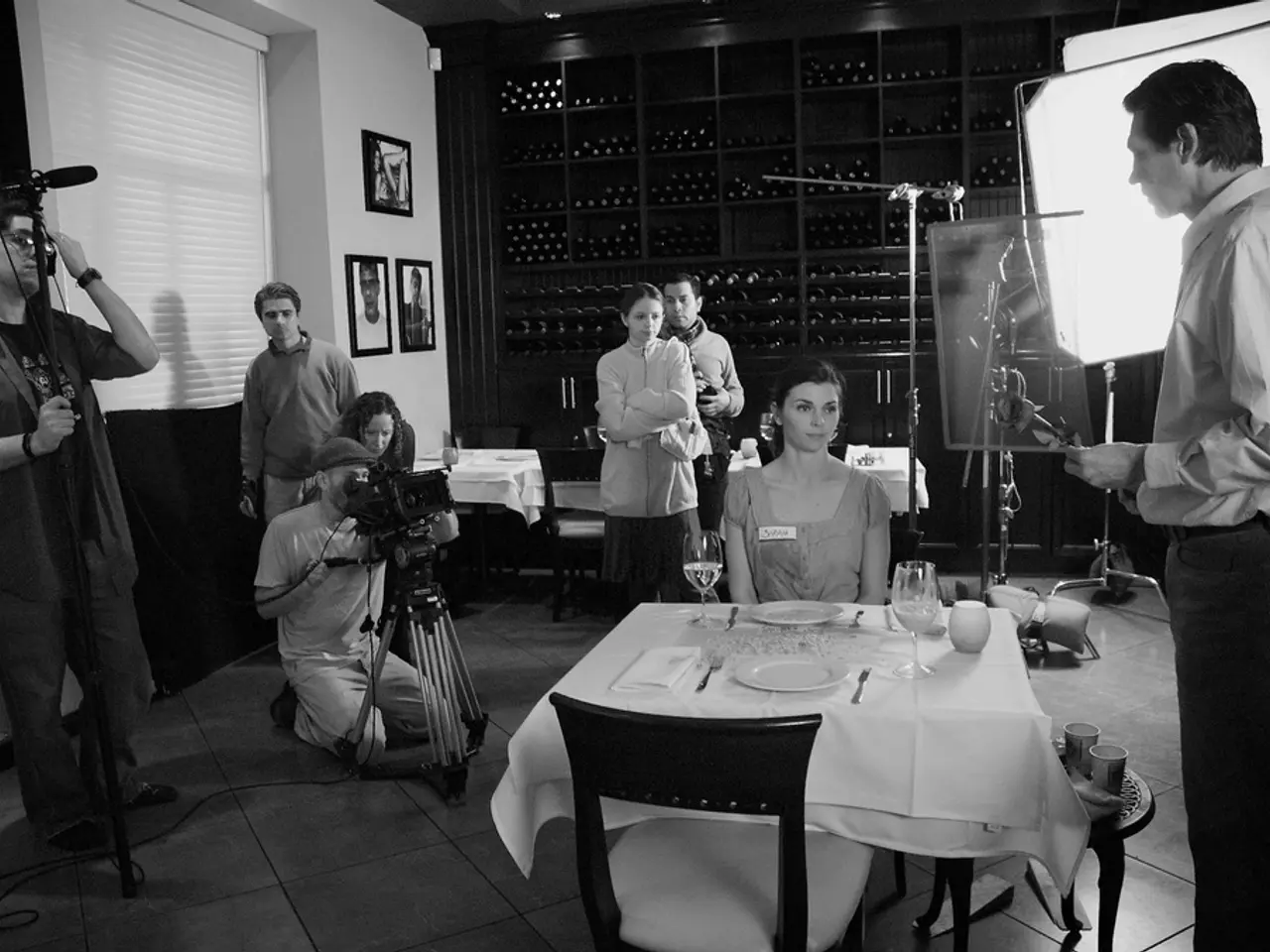Movie vocabulary demystified: Decoding popular film terms such as blockbusters, bombs, and silver screen
In the late 19th and early 20th centuries, cinema was a burgeoning form of visual entertainment, and two pioneers made significant strides in its development. Arthur Cheetham, a Derby-born man who settled in Wales in the 1880s, and Adele De Berri, a cookware demonstrator from Chicago, left indelible marks on the history of cinema.
Arthur Cheetham is recognised for his role as a regional early filmmaker. He produced some of the first moving pictures shot in Wales, capturing everyday life, events, and scenes. His work helped establish film as a popular medium beyond the major urban centers and contributed to the growth of cinema culture in Britain. One of his first films, shot in January 1898, featured children playing on the sands of Rhyl.
Meanwhile, in the United States, Adele De Berri was experimenting with the reflective qualities of silver paint around the same time as Cheetham was refurbishing his Rhyl cinema in 1909. She eventually found a mix that worked on canvas and patented her discovery, founding a company, Da-Lite, in 1909. De Berri sold her invention to the picture houses of the United States, revolutionising the quality of projected images.
Their contributions were evident in the early cinemas that began to spring up. In 1906, Arthur Cheetham opened Rhyl's first cinema, the Central Hall in Market Street. The Lyric Theatre in Perth Amboy, New Jersey, was equipped with a new silver-coated screen in 1909, and in 1910, the Gem Theatre in North Dakota had a screen coated with aluminum or silver paint.
The entertainment at these cinemas was a spectacle. The opening night of the Central Hall promised 'the Silvograph animated pictures', and the engagement 'at great expense' included the Welsh baritone, Mr. T. Amos Jones, singing popular songs. Other ballads were sung by Mrs. Cheetham, whose services were presumably not paid. Madame Williamson gave 'selections on the American concert bells' to round off the evening.
However, the silver screens were not without their issues. The center of these screens tended to be flooded with light, leaving the peripheries looking darker, a phenomenon known as hot-spotting. Over time, silver screens were phased out, except for a surprising revival with the advent of 3-D films.
The term 'blockbuster' originated from developments in bomb technology during World War II, referring to High Capacity bombs. The first aircraft to carry these bombs operationally were Wellingtons during a strike on Emden in April 1941. The term was later applied to films in the 1940s, denoting films with big budgets, epic scale, and anticipated box-office success. The Golden Age of the blockbuster arrived in the mid-1970s, ushered in by films like Jaws (1975) and Star Wars (1977).
Arthur Cheetham's legacy is often recognised in discussions of early filmmaking outside London and the expansion of the film industry into different parts of the UK. His work, along with that of Adele De Berri, played a crucial role in the development and popularisation of cinema, paving the way for the blockbusters we know today.
Movies-and-TV and entertainment were significantly advanced during the late 19th and early 20th centuries, with pioneers like Arthur Cheetham and Adele De Berri playing essential roles. Cheetham, a British filmmaker, helped establish film as a popular medium beyond urban centers, while De Berri's invention of silver-coated screens in the US revolutionized the quality of projected images in cinemas, collectively contributing to the growth of the entertainment industry.







